500 years later, Mexico recalls but doesn’t celebrate Spanish conquest
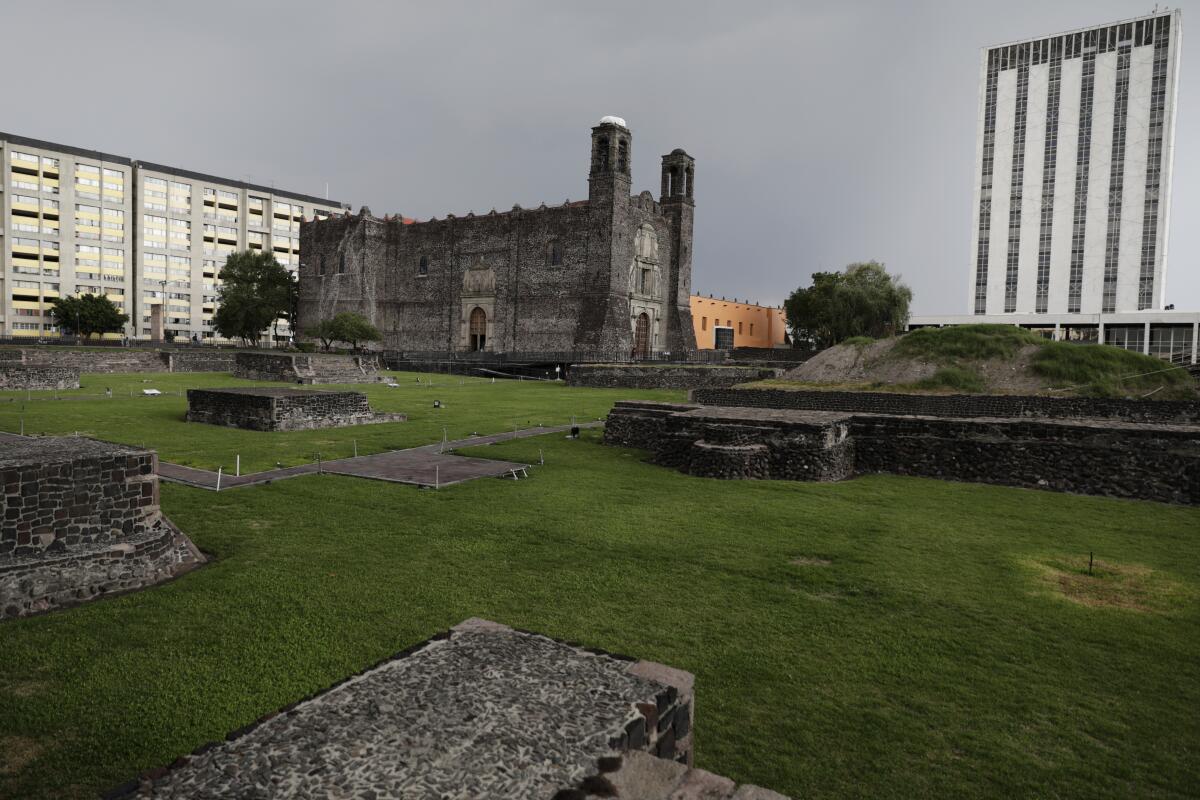
- Share via
MEXICO CITY — In a country that takes great pride in its museums and monuments, the final resting place of one of Mexico’s signature historical figures is easy to miss.
A simple red plaque — just a name and the years he lived — marks the spot where his tomb is embedded in a wall to the side of the altar in a dilapidated downtown church. Few worshipers take notice.
The name alone, however, recalls centuries of conflict and a never-ending debate about the essential identity of Mexico:
HERNAN CORTES 1485-1547.
The legendary Spanish military commander may be hidden away in death, but a few blocks away, authorities are readying a remembrance of his momentous triumph — the conquest of the Aztec Empire.
Friday marks the 500th anniversary of the fall in 1521 of the Aztec capital, Tenochtitlán, now the site of Mexico City. The bloody siege culminating in its surrender launched three centuries of Spanish dominion in Mexico.
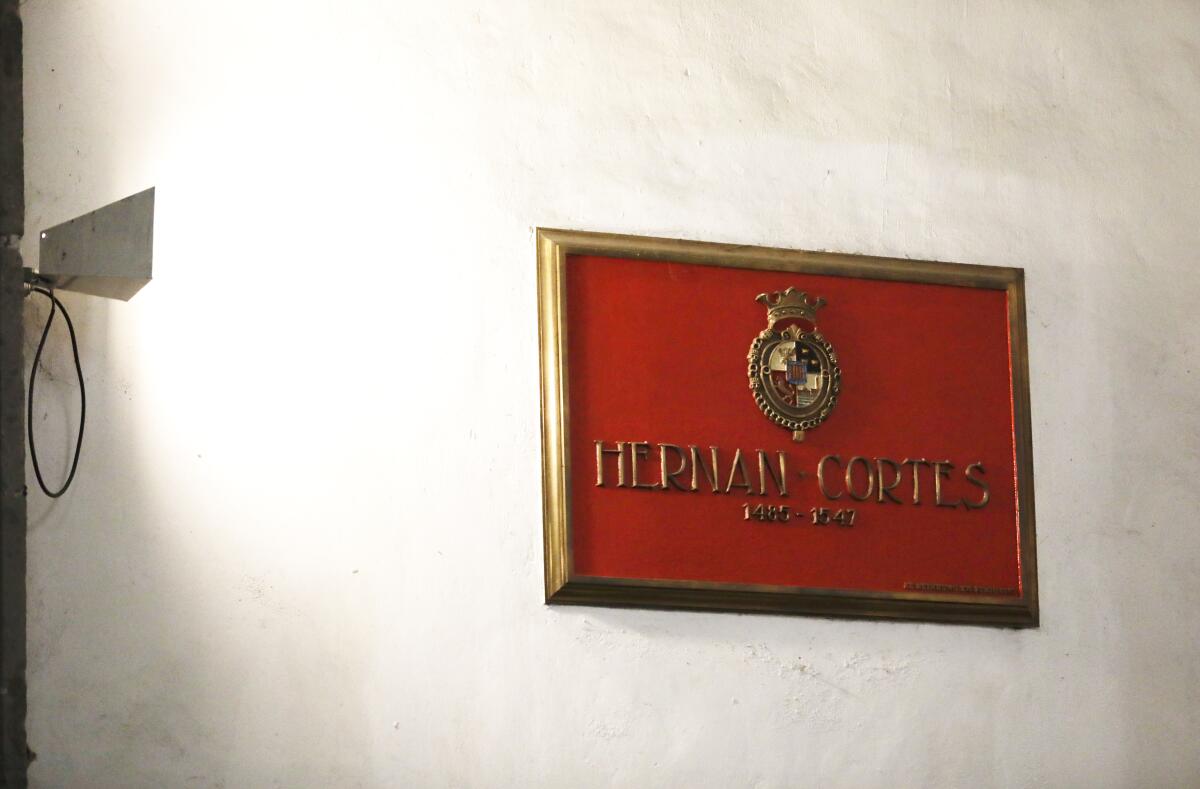
The conquest still stirs profound disquiet in the national psyche.
Politicians and activists have put their own spin on history, casting Cortés as the coldblooded archetype of European imperialism. But regardless of the denunciations, his military campaign is what led to Mexico’s modern identity as a mixed-race nation.
“We were all born from the conquest, no longer Aztecs, no longer Spanish, but Indian-Hispanic-Americans, mestizos,” wrote Carlos Fuentes, the late Mexican author. “We are what we are because Hernán Cortés, for good or for bad, did what he did.”
This week in Mexico City’s central plaza, or zócalo, workers have been erecting a more-than 50-foot-tall replica of the emblematic Templo Mayor, the main sanctuary of the Mexicas, as the Aztecs called themselves. A multi-colored light show will flash images Quetzalcoatl, the plumed serpent, and other Aztec motifs.
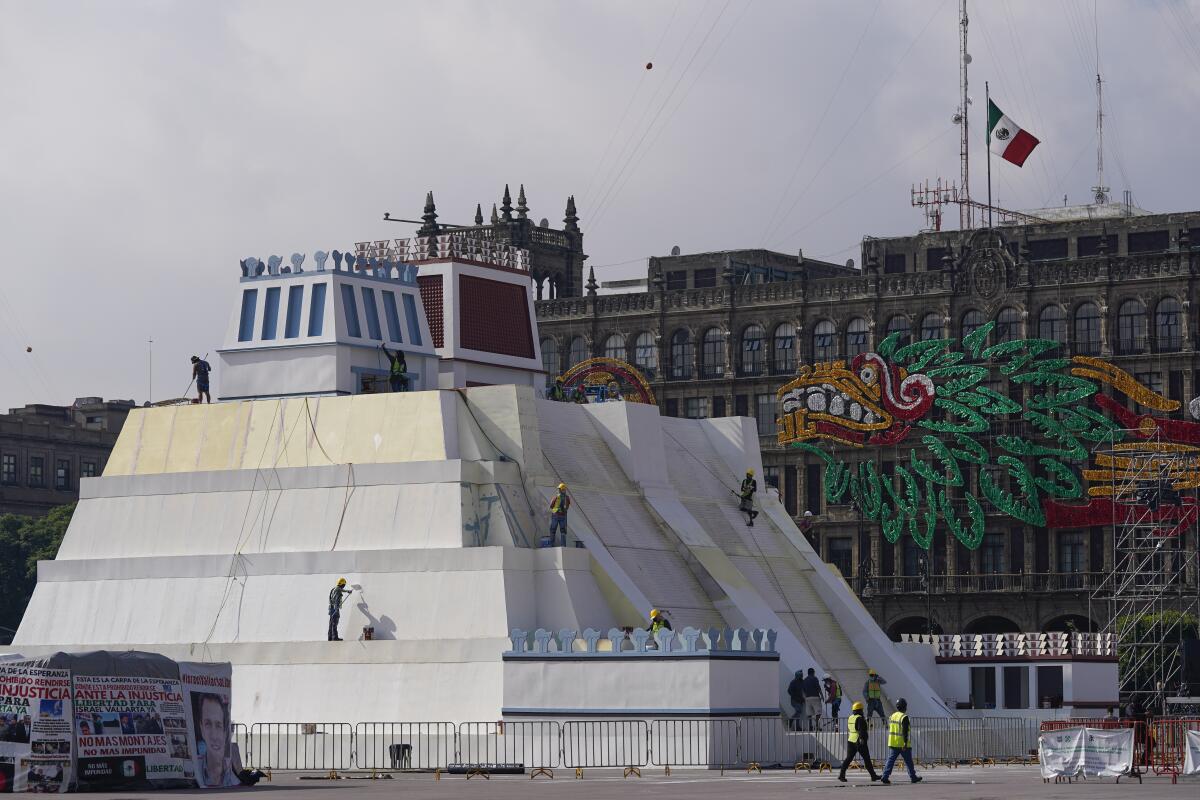
“A society needs to know where it comes from to know where it is going,” Claudia Sheinbaum, Mexico’s City mayor, said at a forum last month detailing plans for the occasion. “How can we resolve some of our great problems if we don’t know where they began?”
By any measure, Spain’s arrival in the New World was a global milestone, a meeting of civilizations that had evolved distinctly through the millennia.
“It was a turning point in human history, and we will never go back,” said Matthew Restall, a professor at Penn State University and author of “When Montezuma Met Cortés: The True Story of the Meeting That Changed History,” chronicling the encounter between the Aztec ruler and the Spanish conquistador. “These were human beings who had been on the planet for tens of thousands of years and never knew about each other.”
Portraying the Spaniards’ arrival as a nationalist parable of good versus evil — a glorious native culture devastated by European marauders — Mexican President Andrés Manuel López Obrador has called for historic “reconciliation.”
“The so-called conquest was accomplished with the sword and the cross,” he declared a few months after taking office. “Thousands of people were murdered during this period. A culture was imposed, one civilization on top of another, to the point where Catholic churches were constructed on top of the temples of pre-Hispanic peoples.”
Both Spain and the Vatican have rebuffed the president’s demands for apologies. Events from five centuries ago cannot be judged by “contemporary considerations,” the Spanish government said. The Catholic Church pointed out that during a 2015 trip to Bolivia, Pope Francis already apologized for colonial-era abuses committed against Indigenous populations in the Americas.
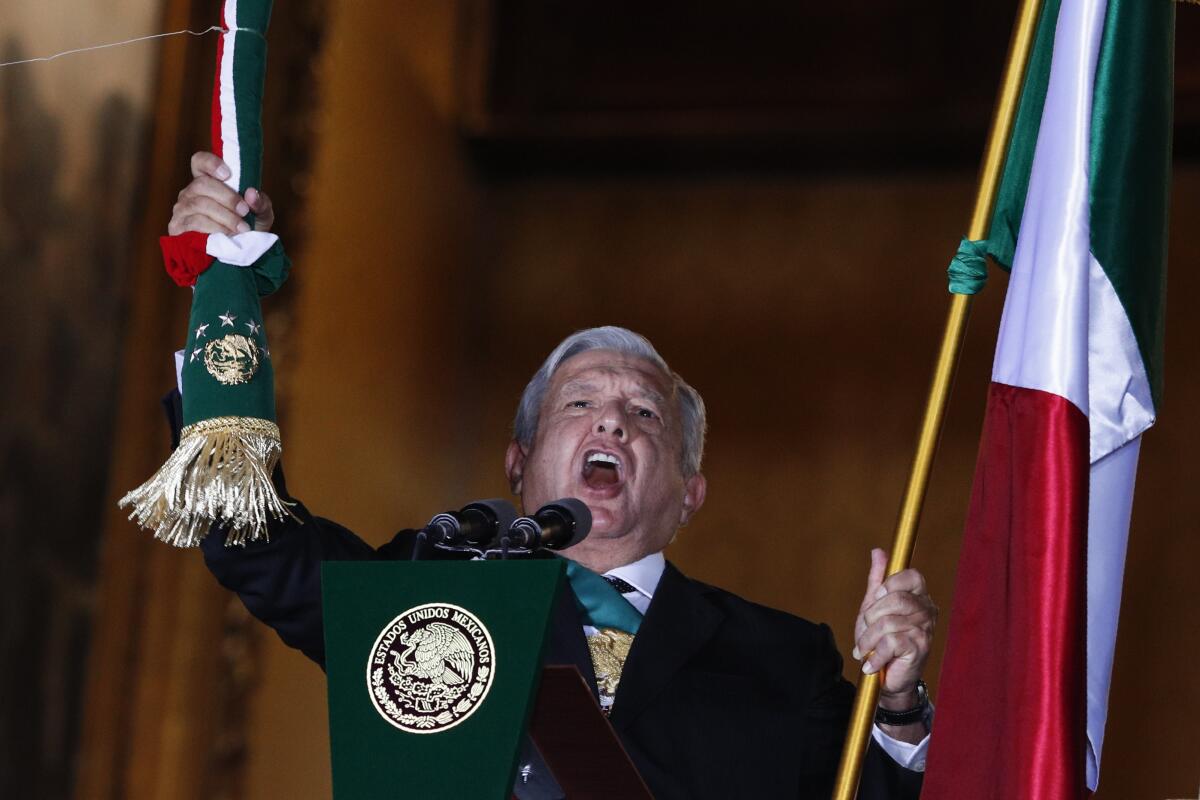
“We want him to do it in Mexico too,” López Obrador shot back.
No one disputes the culpability of Cortés and his captains in massacres, torture, forced religious conversion and enslavement in a quest for glory and gold. However, many historians also dismiss López Obrador’s good-versus-evil template as one-dimensional.
“It’s a simple vision of history in which one sees everything as black and white,” said Alfredo Ávila, a historian at the National Autonomous University of Mexico. “The historic reality is never that simple.”
Mexican officials have dubbed the remembrance “500 Years of Indigenous Resistance.”
The “resistance” tag overlooks an uncomfortable fact: More than 90% of Cortés’ troops in the siege of Tenochtitlán were Indigenous rivals of the Aztecs, notably warriors from the Tlaxcalan and Totonac cultures. Post-conquest, historians say, other Indigenous peoples bowed to Spanish hegemony, while Cortés rewarded allies in the war against the Aztecs with favored treatment, including exemption from some royal taxes.
“Many Indigenous groups collaborated with the Spanish,” said historian Miguel Pastrana Flores, also at the National Autonomous University of Mexico. “It was an alliance that not only fought with the Spanish, but provided the Spanish with food, shelter, helped fabricate their arms and build their boats.”
The Aztecs ruled a vast realm, from present-day Central America to central Mexico. But divisions roiled their domain. Resentment seethed among vassal communities fed up with their overlords’ demands for tribute, including victims for human sacrifice.
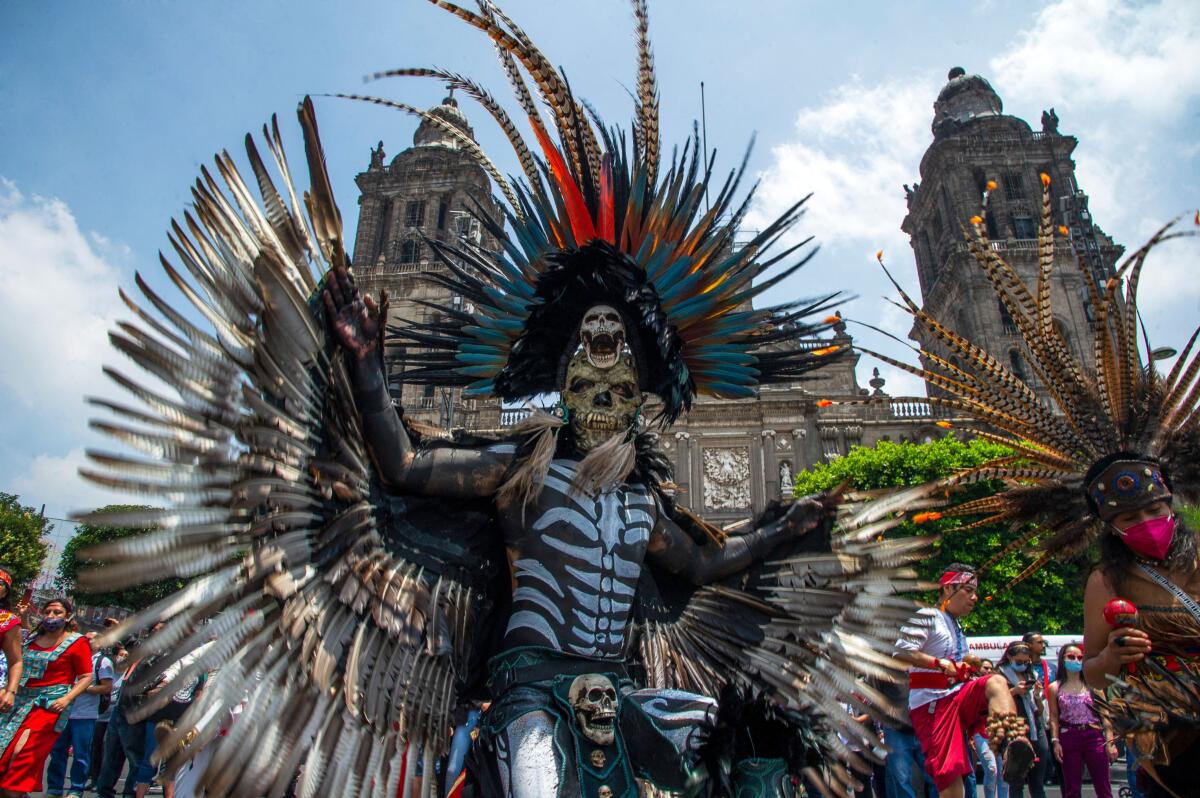
Cortés skillfully played on these deep fissures, recruiting personnel to bolster the thin Spanish ranks.
Today, some view the events of 1521 less as a Spanish-versus-Aztec struggle than as a tipping point in an internal Mesoamerican clash among the diverse Indigenous populations of the day. An alliance of convenience with the bearded outsiders brought the benefit of horse-bound cavalry, sophisticated military tactics and technologically advanced weaponry, including cannons, muskets and crossbows.
As historical interpretations have evolved, the Spanish usurpation and how it is construed remain a tinderbox in Mexico.
Sheinbaum, the Mexico City mayor and a protege of the president, recalled her youthful miseducation about Mexico’s origins.
“They made us see — or at least, that was the history that I learned in school — that the conquest of Mexico had been almost romantic, and that there had simply been an ‘encounter of two worlds,’ ” she said. “And, in reality, history wasn’t like that.”
Cortés, an ambitious and ruthless adventurer with a penchant for defying his superiors, arrived on Mexico’s Gulf coast in 1519 and set his sights on the treasures of the Aztec Empire, based hundreds of miles away in a high-altitude valley flanked by volcanoes. He and his 500 or so initial troops proceeded north, convincing legions of Indigenous adversaries of the Aztecs to join them as warriors, porters and laborers.
Accompanying Cortés was his interpreter and trusted consort, Malintzin, an Indigenous woman now known as La Malinche, who remains an incendiary figure in Mexico — denounced in popular culture as a traitor, but celebrated by some as an extraordinary woman who overcame slavery, prejudice and misogyny.
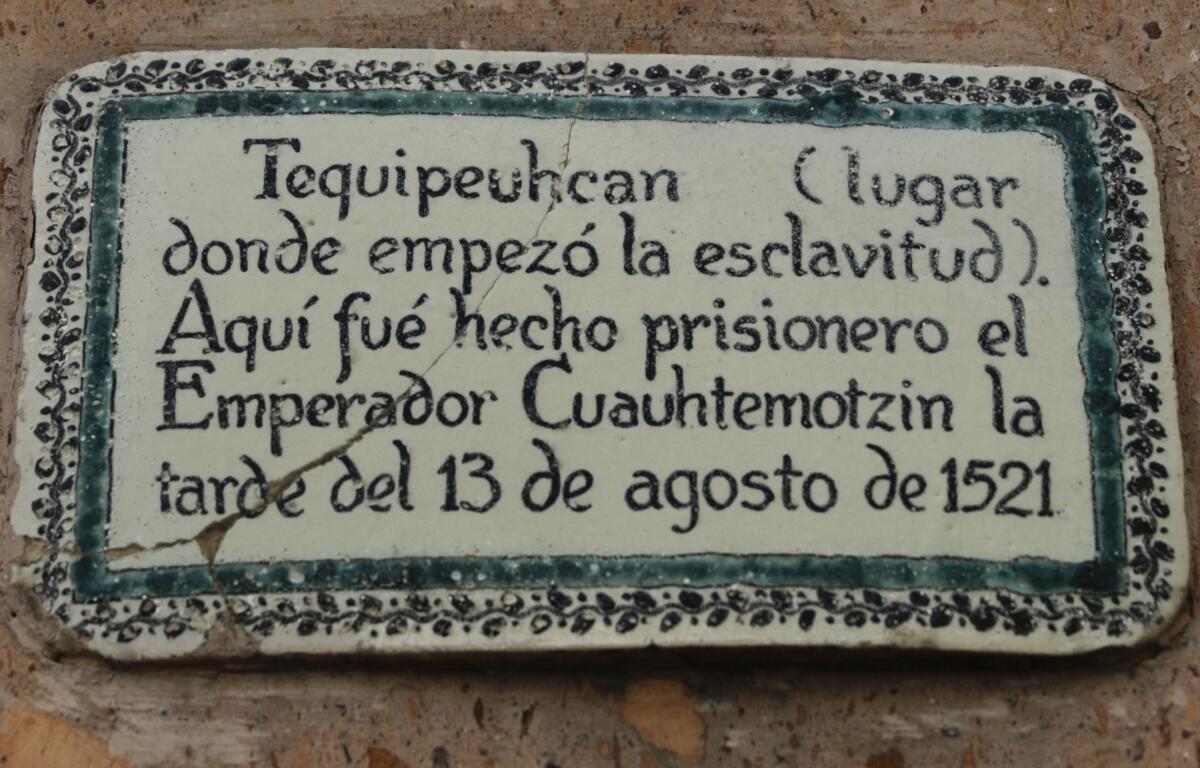
The Spaniards were awed at first sight of the wondrous island-city of Tenochtitlán, with its broad causeways across a series of lakes.
“These great towns … and buildings rising from the water, all made of stone, seemed like an enchanted vision,” Bernal Díaz del Castillo, a member of the expedition, wrote in “The Conquest of New Spain.” “Indeed, some of our soldiers asked if it was not all a dream.”
Montezuma, both wary and curious, had sent emissaries in a bid to dissuade the strangers from venturing to his capital. When Cortés insisted, the emperor extended a welcome to the newcomers, providing luxurious lodgings and a “sumptuous dinner” after thousands of Aztecs lined up to gawk at the foreigners’ motley ranks, wrote Díaz del Castillo.
The Spaniards, fearing a gilded trap, hatched an audacious plot: They grabbed Montezuma at his palace and forced him back to their quarters and held him hostage. The great monarch whose many underlords could not even look him in the eyes would never be a free man again.
The Aztecs revolted in 1520 after a Spanish massacre of their noblemen at the Templo Mayor. The conquistadors and their allies suffered heavy casualties as they fled the city. Killed during the tumult was the captive Montezuma. The Spaniards pinned his death on a native mob, but many historians believe that the enraged conquistadors executed Montezuma.
Mexican schoolchildren have long learned about the Noche Triste — The Night of Sadness — as the Spaniards’ nocturnal retreat from the Aztec uprising is known.
This year, in another revisionist touch, Mexico City renamed the plaza where a grief-stricken Cortés supposedly mourned his losses as Noche Victoriosa, or Night of Victory.
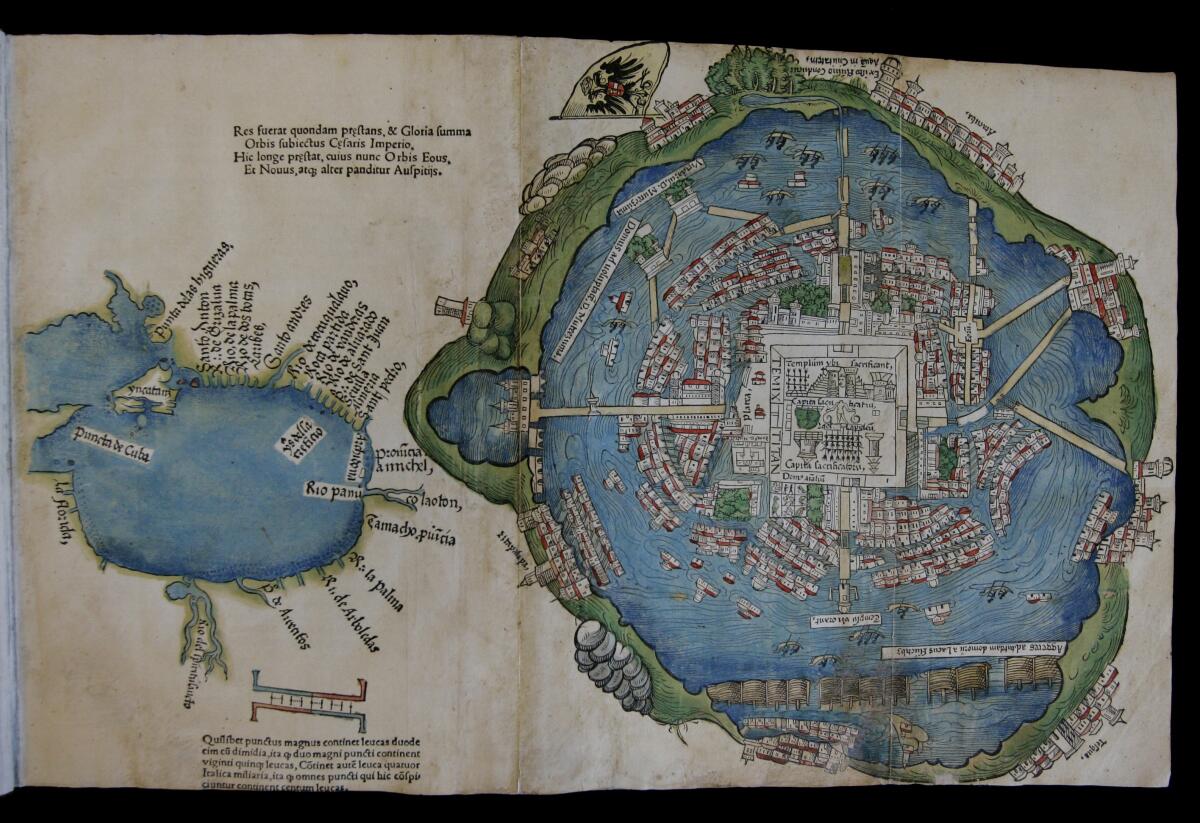
“It’s time to give a voice to the original peoples of our land,” Sheinbaum tweeted last month, heralding the rebranding of the plaza. “It’s time to revise the past in order to transform the present.”
One problem: Historians say casualties among the Indigenous rank and file aiding Cortés far outnumbered Spaniards who perished in the chaotic withdrawal. Scholars also dispute the mayor’s comments that contemporary racism in Mexico can be traced to the Spanish.
“This government makes political use of history and thinks that changing the name of a plaza changes history,” said Alejandro Rosas, an independent historian. “The typical idea is that [Mexico] was practically an earthly paradise until the Spanish brought all the bad. That’s also false.”
Cortés soon regrouped and, with reinforcements from Spain and additional Indigenous recruits, launched his siege of Tenochtitlán.
By then, a smallpox outbreak — the native people of the Americas had no immunity to the virus — had ravaged the Aztec capital. Nonetheless, its warriors mounted a spirited defense, using hundreds of canoes to transport forces between the city and the lake shore and to thwart enemy advances on the causeways. Cortés deployed newly built brigantines with sails, oarsmen and cannon while blockading supplies of food and fresh water to the city.
In what is surely one of the epic battles in the history of the Americas, tens of thousands were killed in months of cavalry and infantry charges, door-to-door urban warfare and naval engagements. In his firsthand account, Díaz del Castillo describes onslaughts of arrows, darts and stones and the doleful sight of Spanish prisoners being placed on sacrificial altars as captors cut open their chests and “drew out their palpitating hearts which they offered to the idols before them.”
But the battered, starving Aztecs finally surrendered on Aug. 13, 1521, their last emperor, Cuauhtémoc, captured and tortured. Cortés ordered Cuauhtémoc executed four years later for alleged treason.

“We could not walk without treading on the bodies and heads of dead Indians,” wrote Díaz del Castillo. “The stench was so bad that no one could endure it.”
Cortés eventually returned to Spain to deal with various legal and financial entanglements. He died there in 1547. He was 62.
Convinced that his achievements had been underappreciated in Spain, he had wanted his body returned to Mexico. It took almost two decades, but in 1566 his remains were shipped across the Atlantic.
As anti-Spanish independence fervor gripped Mexico in the early 19th century, some feared that independistas would desecrate the remains. So in the 1820s, one of Cortés’ sympathizers reportedly collected the remains for safekeeping, hiding them in a hospital. Years later, he secretly hollowed out a space at the Jesus of Nazareth Church, deposited a lead, wood and glass container holding the bones — including a skull wrapped in lace — and then repaired the wall, according to various accounts in the Spanish and Mexican press.
The church is said to be around the corner from the spot where Cortés and Montezuma first met, though contemporary, traffic-clogged Mexico City is unrecognizable from the island Aztec capital.
The whereabouts of Cortés’ remains were a mystery until 1946, when the discovery of a document revealed the secret and Mexican officials authorized a team to extract them. The bones were returned to the church wall the following year with the simple red plaque.
Amid Friday’s memorial events, none are planned for Cortés.
Special correspondent Cecilia Sánchez in Mexico City contributed to this report.
More to Read
Sign up for Essential California
The most important California stories and recommendations in your inbox every morning.
You may occasionally receive promotional content from the Los Angeles Times.









